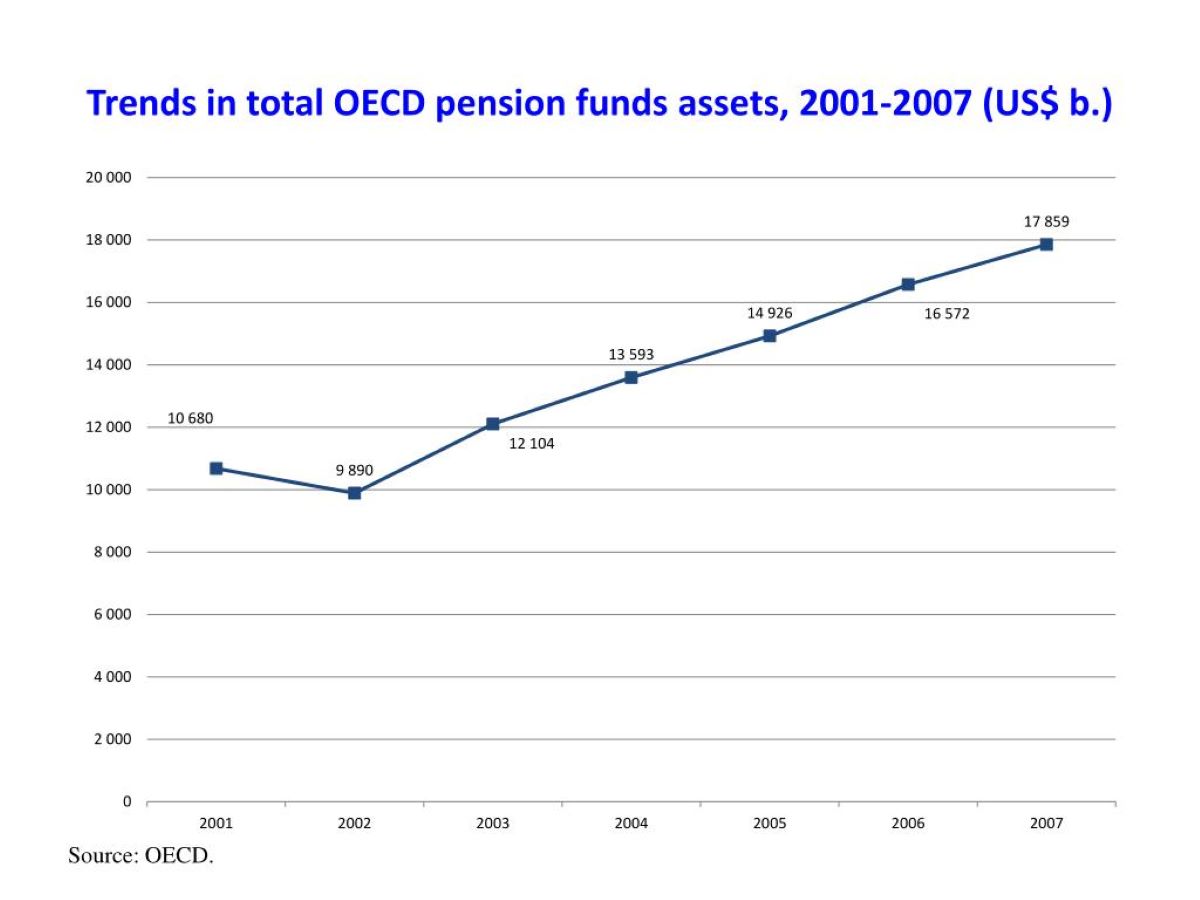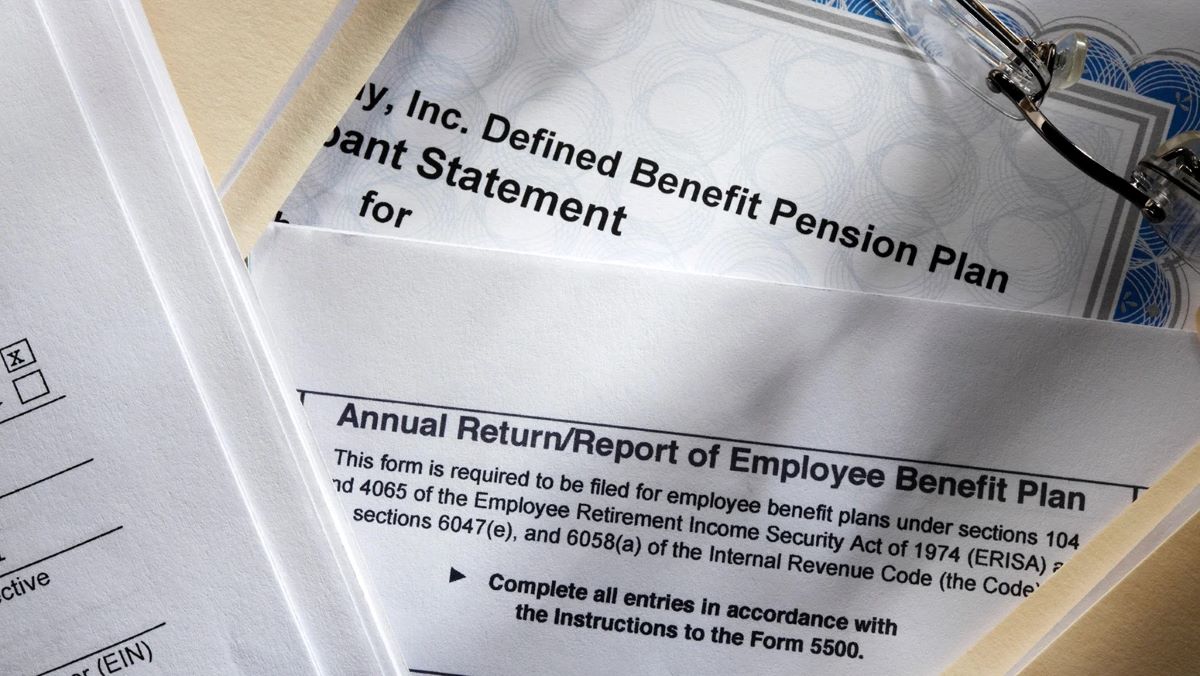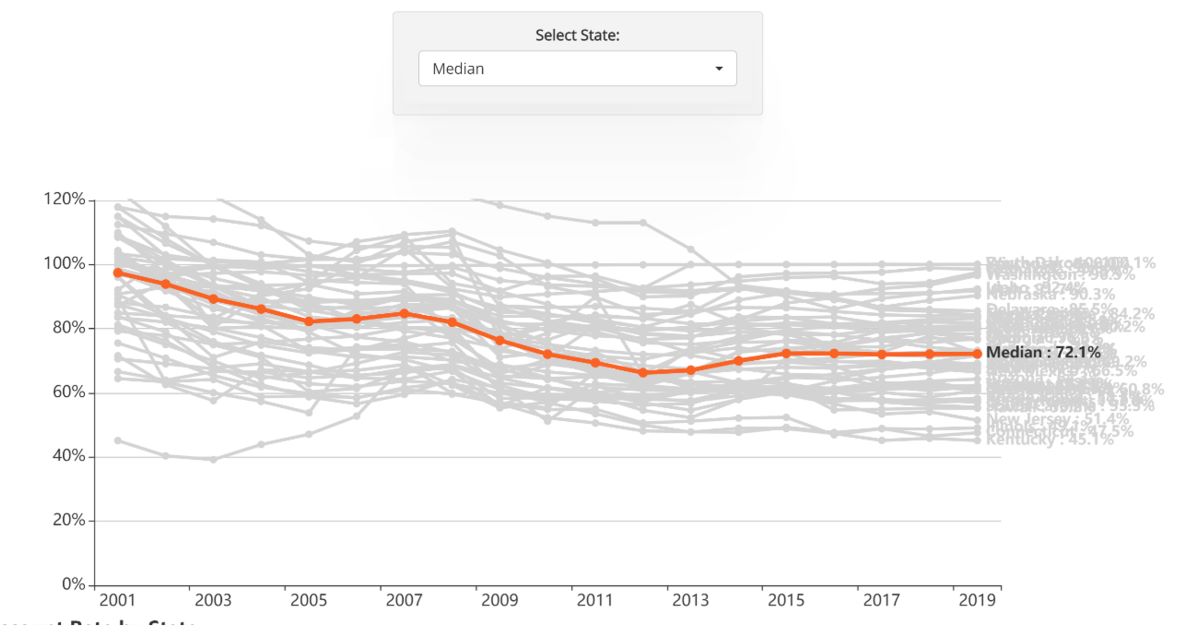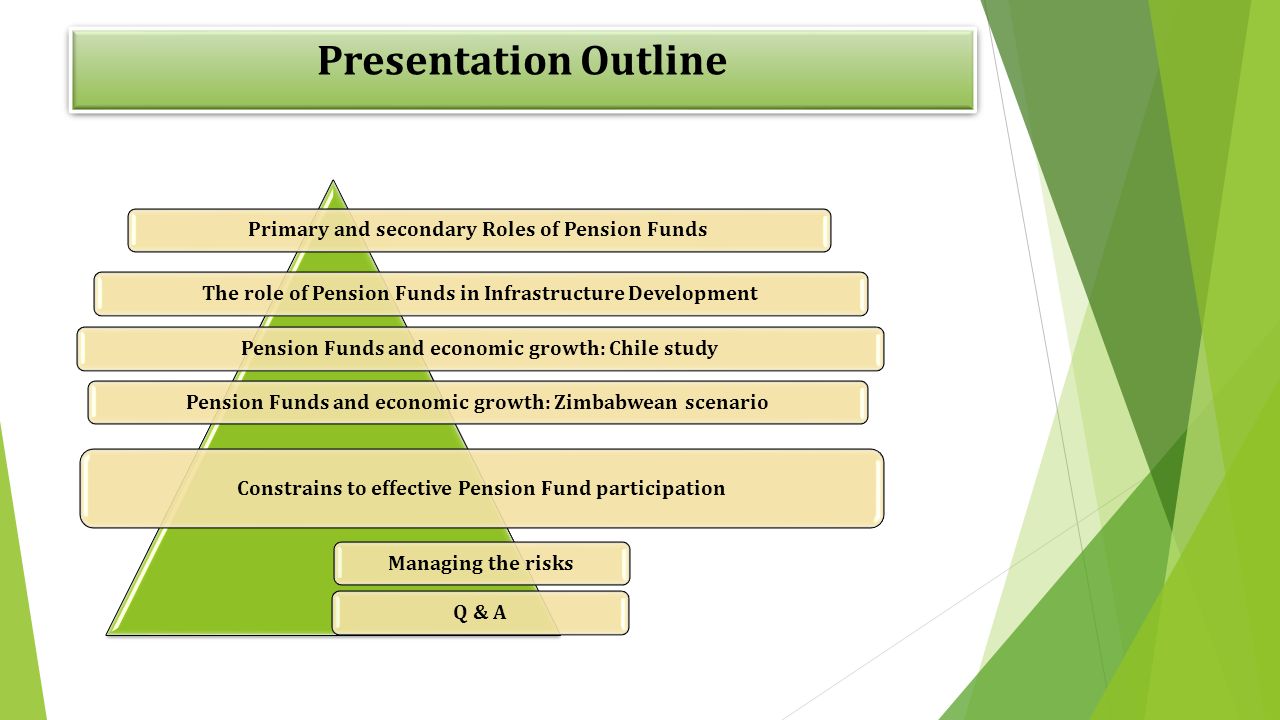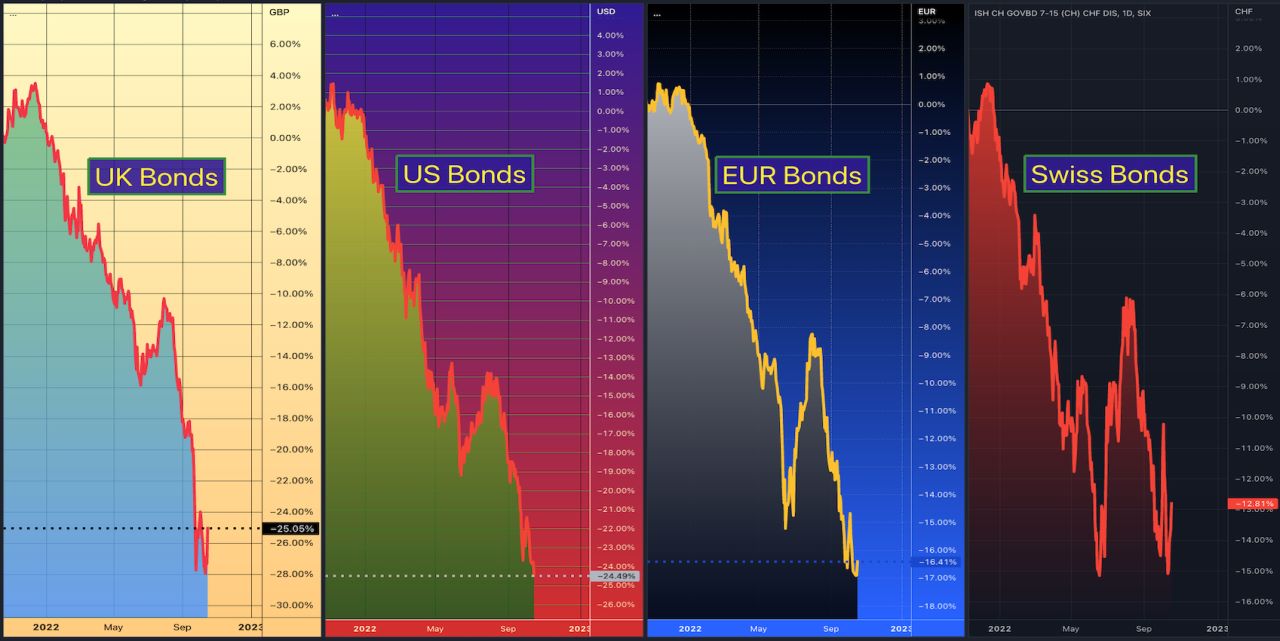

Finance
What Kinds Of Pension Funds Are There?
Published: January 22, 2024
Discover the different types of pension funds and how they can help you secure your financial future. Learn about the various options available in finance.
(Many of the links in this article redirect to a specific reviewed product. Your purchase of these products through affiliate links helps to generate commission for LiveWell, at no extra cost. Learn more)
Table of Contents
Introduction
Pension funds play a pivotal role in ensuring financial security for individuals during their retirement years. These funds are designed to provide a steady income stream after an individual ceases to work, thereby supporting a comfortable and stable lifestyle. Understanding the various types of pension funds is crucial for anyone planning for retirement or seeking to optimize their financial strategies.
Pension funds can be broadly categorized into defined benefit plans, defined contribution plans, hybrid plans, public pension plans, and private pension plans. Each type has distinct features, benefits, and considerations that individuals and organizations need to comprehend to make informed decisions. By exploring the nuances of these pension funds, individuals can better navigate their retirement planning and make strategic choices aligned with their financial goals.
In the following sections, we will delve into each type of pension fund, shedding light on their unique characteristics, advantages, and potential drawbacks. By gaining a comprehensive understanding of the diverse pension fund landscape, readers can empower themselves to make informed decisions that align with their long-term financial well-being. Let's embark on this insightful journey to unravel the intricacies of pension funds and equip ourselves with the knowledge needed to secure a financially stable retirement.
Defined Benefit Pension Plans
Defined benefit pension plans, also known as traditional pension plans, are designed to provide retirees with a predetermined, regular payment based on factors such as salary history, years of service, and age at retirement. These plans offer a sense of financial security by guaranteeing a specific benefit amount, often calculated using a formula that considers the employee’s earnings and years of service. Employers bear the investment risks and are responsible for ensuring that the promised benefits are delivered, making defined benefit plans an attractive option for employees seeking stable retirement income.
One of the key advantages of defined benefit plans is the predictability they offer, as retirees can anticipate the amount they will receive during their retirement years. This steady income stream can contribute to a sense of financial stability and peace of mind for retirees, especially in an uncertain economic landscape. Additionally, defined benefit plans often provide cost-of-living adjustments to help beneficiaries keep pace with inflation, further enhancing the appeal of these pension arrangements.
Employers play a central role in managing defined benefit plans, assuming the responsibility for investment decisions and funding the plan to ensure it can meet its future obligations. While this places a financial burden on employers, it can be advantageous for employees, as they are insulated from investment risks and market fluctuations. However, the long-term sustainability of defined benefit plans can pose challenges for employers, particularly in the face of changing demographics and economic conditions.
Overall, defined benefit pension plans offer retirees a reliable source of income, shielding them from the uncertainties of financial markets and investment performance. By providing a predetermined benefit based on specific criteria, these plans contribute to the financial well-being of retirees, offering a sense of security and stability as they transition into their post-employment years.
Defined Contribution Pension Plans
Defined contribution pension plans represent a distinct approach to retirement savings, wherein both employees and employers make regular contributions to individual accounts. Unlike defined benefit plans, the ultimate retirement benefit is not predetermined but rather depends on the performance of the investment portfolio within the account. Common examples of defined contribution plans include 401(k) plans in the United States and group registered retirement savings plans (RRSPs) in Canada.
One of the key features of defined contribution plans is the flexibility they offer, allowing employees to actively participate in managing their retirement savings. Individuals can typically decide how their contributions are invested, choosing from a range of investment options such as stocks, bonds, and mutual funds. This level of control empowers employees to tailor their investment strategy according to their risk tolerance, financial goals, and time horizon.
Employers may match a portion of the employees’ contributions, providing an additional incentive for individuals to participate in these plans. The employer match can significantly boost the overall retirement savings, effectively augmenting the financial resources available to employees upon retirement. Furthermore, defined contribution plans are portable, enabling employees to retain their accumulated savings even if they change jobs, fostering continuity in their retirement planning.
While defined contribution plans offer greater flexibility and portability, they also expose individuals to investment risks and market volatility. The value of the retirement savings is subject to fluctuations in the financial markets, and individuals bear the responsibility of managing their investment allocations to align with their retirement objectives. As a result, the retirement income from defined contribution plans is not guaranteed and depends on the performance of the underlying investments.
Defined contribution pension plans have become increasingly prevalent in the modern workforce, reflecting a shift towards individualized retirement planning and investment management. By empowering employees to actively engage in their retirement savings and investment decisions, these plans offer a dynamic approach to building financial resources for the post-employment phase, fostering a sense of ownership and involvement in shaping one’s financial future.
Hybrid Pension Plans
Hybrid pension plans, as the name suggests, combine elements of both defined benefit and defined contribution plans, offering a blend of features that seek to leverage the strengths of each approach. These plans aim to provide a measure of income security while incorporating elements of individual account ownership and portability. One common type of hybrid plan is the cash balance plan, which presents a unique structure for accruing retirement benefits.
In a cash balance plan, employees have individual accounts that receive annual contributions from the employer, typically based on a percentage of the employee’s salary. These contributions, along with a predetermined interest credit, accumulate over the course of the individual’s career, thereby building a retirement benefit that is reflective of both the employer’s contributions and the plan’s investment performance. This structure combines the portability and individual account features of defined contribution plans with the income security characteristic of defined benefit plans.
Hybrid pension plans seek to offer employees a degree of predictability in their retirement benefits, akin to traditional defined benefit plans, while also granting them a sense of ownership and control over their individual accounts. The hybrid model endeavors to strike a balance between providing a guaranteed income stream and enabling employees to monitor the growth of their retirement savings over time, aligning with the evolving preferences and priorities of the modern workforce.
These plans often incorporate vesting schedules, delineating the timeline over which employees become entitled to the employer-contributed funds. This feature aims to incentivize employee retention and loyalty, as individuals gradually attain full ownership of the employer-provided contributions based on their tenure with the company. The vesting schedule is a critical aspect of hybrid plans, influencing employees’ long-term commitment to their current employer and the accumulation of retirement assets.
Hybrid pension plans represent a nuanced approach to retirement benefits, offering a middle ground between the distinct structures of defined benefit and defined contribution plans. By integrating elements of both models, these plans aim to provide a comprehensive solution that addresses the desire for income security and the need for individual account ownership, catering to the multifaceted preferences and financial objectives of employees in today’s diverse workforce.
Public Pension Plans
Public pension plans are established and maintained by governmental entities to provide retirement benefits to eligible employees in the public sector, including civil servants, teachers, and public safety personnel. These plans are designed to offer a form of financial security to individuals who have dedicated their careers to public service, ensuring that they can enjoy a stable income during their retirement years. Public pension plans vary in structure and administration, with different jurisdictions implementing distinct frameworks to support the retirement needs of public sector employees.
One defining characteristic of public pension plans is their role as a core component of the overall compensation package for public sector employees. These plans often serve as a means to attract and retain skilled professionals in essential public service roles by offering long-term retirement benefits that complement the employees’ salaries and other incentives. The stability and reliability of public pension plans can contribute to the overall appeal of public sector employment, fostering a dedicated and experienced workforce.
Many public pension plans operate on a defined benefit basis, providing retirees with a predetermined income stream based on factors such as years of service and final average salary. This approach aims to ensure that public sector employees can retire with a level of financial security commensurate with their contributions to the community. Additionally, public pension plans may incorporate provisions for cost-of-living adjustments to help retirees maintain their purchasing power in the face of inflation.
Public pension plans are often subject to specific regulations and oversight, given their association with governmental entities. The funding and management of these plans are typically guided by statutory requirements and governance structures aimed at safeguarding the long-term sustainability of the pension funds. Governmental bodies and pension boards play crucial roles in overseeing the administration, investment strategies, and benefit disbursements of public pension plans, aligning with their fiduciary duties to plan participants.
Overall, public pension plans serve as a vital pillar of support for public sector employees, offering a means to plan for and enjoy a financially secure retirement. These plans reflect a commitment to recognizing the contributions of public servants and providing them with a reliable source of income as they transition into the next phase of their lives. By upholding the integrity and viability of public pension plans, governments can honor their obligation to support the well-being of those who have dedicated their careers to serving the public good.
Private Pension Plans
Private pension plans, also known as employer-sponsored or corporate pension plans, are established and maintained by private companies to facilitate retirement savings and income for their employees. These plans serve as a valuable component of the overall employee benefits package, offering a means for workers to accumulate funds for their post-employment years. Private pension plans are instrumental in fostering financial security and long-term planning for employees across diverse industries and sectors.
One of the primary distinctions among private pension plans is the differentiation between defined benefit and defined contribution arrangements. In the context of private sector employment, defined benefit plans traditionally guaranteed retirees a specific income stream based on factors such as salary history and years of service. However, the prevalence of defined contribution plans, wherein employees actively contribute to individual accounts with potential employer matching, has increased in recent years, reflecting a shift towards personalized retirement savings strategies.
Private pension plans are often structured to provide employees with options for contributing a portion of their earnings towards their retirement accounts, thereby fostering a culture of proactive financial planning. Employers may offer matching contributions to incentivize employee participation in these plans, effectively augmenting the retirement savings and reinforcing the value of long-term financial preparedness. The employer’s contributions can significantly enhance the overall retirement benefits available to employees, complementing their personal savings efforts.
The management and oversight of private pension plans typically involve fiduciary responsibilities to act in the best interests of plan participants, ensuring prudent investment strategies and diligent administration. Employers and plan administrators play pivotal roles in maintaining compliance with regulatory requirements, communicating plan details to employees, and facilitating the seamless operation of the pension arrangements. This commitment to transparency and governance underscores the importance of private pension plans in supporting employees’ financial well-being.
Private pension plans contribute to the broader objective of promoting retirement security and stability for the workforce, aligning with employers’ efforts to attract and retain talented professionals. By offering retirement benefits that complement employees’ compensation packages, private pension plans demonstrate a commitment to nurturing a loyal and motivated workforce, fostering a sense of financial reassurance and long-term planning among employees.
Conclusion
As individuals navigate the intricate landscape of pension funds, it becomes evident that the realm of retirement planning is multifaceted, offering a diverse array of options tailored to different preferences and needs. Defined benefit pension plans present a traditional yet reliable approach, affording retirees a sense of financial security through predetermined income streams. On the other hand, defined contribution plans empower employees to actively engage in their retirement savings, embracing flexibility and individualized investment strategies.
Hybrid pension plans bridge the gap between these two models, striving to combine the stability of defined benefits with the individual account ownership characteristic of defined contributions. This approach reflects a nuanced understanding of employees’ desire for predictability and control over their retirement assets. Public pension plans stand as a testament to the commitment of governmental entities to support the retirement needs of public sector employees, recognizing their dedicated service and fostering long-term financial stability.
In the private sector, private pension plans play a pivotal role in fostering retirement preparedness and financial security for employees, offering a range of options, from traditional defined benefit plans to modern defined contribution arrangements. These plans underscore the significance of employer-sponsored retirement benefits in nurturing a loyal and motivated workforce, aligning with the broader objective of promoting long-term financial well-being.
Amidst the diverse landscape of pension funds, individuals and organizations are presented with a spectrum of choices, each carrying its own set of advantages and considerations. By gaining a comprehensive understanding of the nuances of pension funds, individuals can make informed decisions that align with their long-term financial goals and preferences. Whether seeking stability, flexibility, or a blend of both, the realm of pension funds offers a wealth of options to support individuals in planning for a financially secure and fulfilling retirement.
